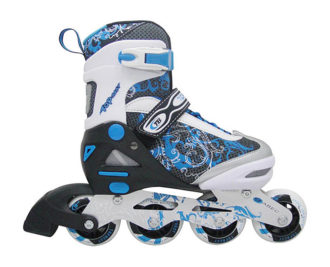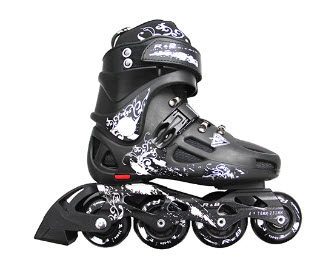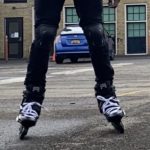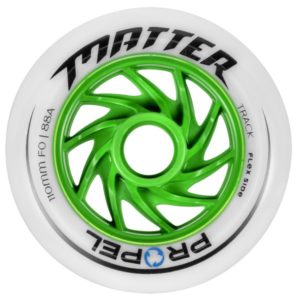What type of Inline Skates to buy?
Skate Buying Guide
What type of inline skates to buy? If this is your first time buying a pair of skates for yourself or a loved one, choosing the right skates can be intimidating, and the sheer number of options can feel overwhelming. Whether you are a first time skater or looking to replace an old pair, the information below aims to help you make an informed decision.
Here are some considerations that you should consider:
1) Soft or Hard?
For recreational inline skating, there are 2 main types: “Soft Boots” or “Hard Boots”. Both have their pros and cons. Let’s take a look:
Soft Boots

Soft Boot Advantages:
- Lighter boots allow you to speed and skate longer distances
- Comfortable like wearing a pair of sneakers
- Breathable to keep your feet cool
- Works well with laces to give you a compressed fit
Soft Boot Disadvantages:
- Lighter boots makes it harder to balance
- Less support on the ankles may cause pronation or supination
Hard Boots

Hard Boot Advantages:
- Hard plastic cuffs help offer better support on the ankles
- Protection against hard surfaces
- Liner cushion is thick for comfort and increased responsiveness
- Extremely durable
Hard Boot Disadvantages:
- Heavier boots requires more effort from users
- Less comfort due to hardness of the boot
2) What size should i buy?
Choosing the right size is by far the second most important thing when buying a skate.
NEVER BUY SKATES WHICH ARE TOO BIG.
Inline skates, just like ski or snowboard boots are responsible for energy transfer and control, which then translate into comfort and safety. Poorly chosen size is equivalent to bad foot position in a skate.
Purchase of a skate in the wrong size causes an unnatural position of the foot, causing discomfort, lack of control during skating and quick wear of the liner – a situation similar to that of walking in too big or unlaced shoes. Therefore, all children skates are produced in adjustable sizes. They usually come in a range of sizes, eg. EUR 27-30, EUR 31-34, EUR 34-37. On the other hand, adult skates sizes are fixed.
Buying bigger skates is not saving. When skates are too big, they do not provide proper support and may lead to serious injury.

Wearing an incorrect skate size can cause pronation or supination
3) What wheel size is good for beginners?
Inline wheel sizing is measured by diameter and stated in millimeters (mm). Wheel diameters will vary in size from very small (57mm or below), to very large (up to 100mm). The variances exist due to the different types of skates that are available. Very large wheels are most commonly found on racing skates because larger wheels allow for higher speeds. Smaller wheels on the other hand offer faster acceleration and deceleration, which is why most skates do not utilize the larger wheel sizes mentioned previously.
Depending on the level skater the skate is made for, recreational skates wheel diameters can range from 70mm up to 90mm, and anywhere in between. Smaller sized wheels are often found older skates or skates designed for beginners. While, 90mm wheels are rather large; therefore they should be used by skaters who are comfortable at higher speeds.
The common wheel size for most recreational skates are between 72mm and 80mm.
Some children skates have shorter frames and thus can only fit 3 wheels.

A 110mm wheel with 88A durometer
In addition to wheel size, wheel Durometer ratings are indicated by a number following by a capital letter A. A wheel Durometer is simply the hardness rating of the wheel. The hardness scale runs from 0 to 100, with 0 being the softest rating and 100 being the hardest. While the rating scale is from 0 to 100, it is not likely you will find a wheel that has a rating softer than 68A. A wheel softer than this is likely to wear down too fast.
Hard wheels allows you to travel faster and slide more easily. Soft wheels offer better traction and grip.
We hope that these information have help you decide on what type of inline skates to buy.
After you have bought your skates, what’s next? Join us for a class and learn different turns and stops!


